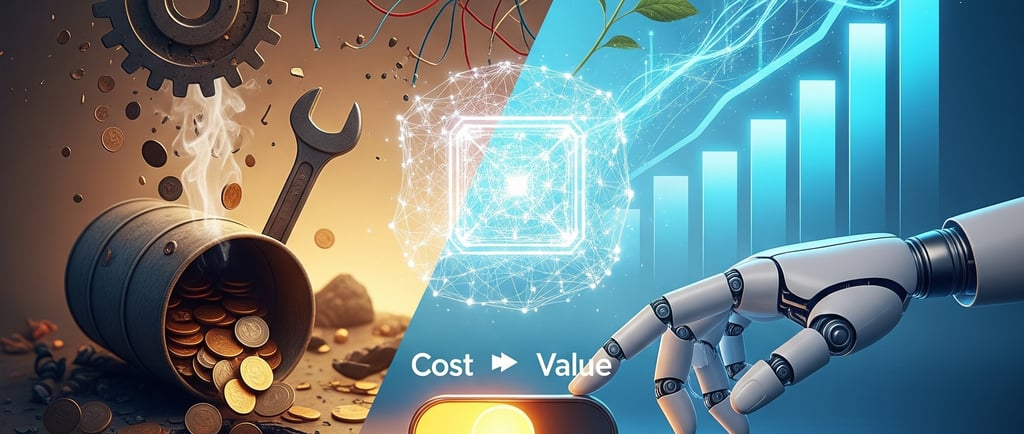The Economics of AI in DevOps: From Cost Center to Value Driver
For decades, IT operations were seen as a cost center—necessary but expensive. But the rise of AI-powered DevOps is flipping this equation. With the right strategies, DevOps can become not just efficient, but a direct driver of business value and innovation.
Voruganti Kiran Kumar
4/11/20252 min read


For decades, IT operations were seen as a cost center—necessary but expensive. But the rise of AI-powered DevOps is flipping this equation. With the right strategies, DevOps can become not just efficient, but a direct driver of business value and innovation.
The Old Model: DevOps as Overhead
Traditionally, enterprises treated infrastructure and operations as unavoidable expenses.
Huge costs in servers, licensing, and manual maintenance.
Downtime leading to revenue loss.
Scaling up requiring massive headcount.
In this model, DevOps was a cost sink.
The New Model: AI-Powered DevOps as Value Creator
With AI integrated into DevOps, the equation changes.
Automation: Reduced need for human intervention lowers labor costs.
Prediction: AI avoids outages before they occur, protecting revenue streams.
Optimization: AI continuously tunes systems for cost efficiency, saving millions.
Acceleration: Faster deployments = faster time-to-market = direct business advantage.
Now, DevOps becomes a profit lever.
Quantifying the ROI
Enterprises ask: “What’s the ROI of AI in DevOps?” The numbers speak:
Downtime Costs: Gartner estimates downtime costs large enterprises $5,600 per minute. AI-powered early detection can save millions annually.
Headcount Reduction: A team of 100 operators might be reduced to 40–50 with automation, saving $4–6M per year in salaries.
Cloud Savings: AI-driven optimization of cloud resources can cut 15–25% of cloud bills, translating to millions for hyperscale deployments.
Innovation ROI: Faster feature releases can generate tens of millions in competitive advantage annually.
Beyond Cost Savings: Strategic Value
The true economics of AI in DevOps is not just about cutting costs. It’s about unlocking growth:
Faster Experimentation → Launch more products, more often.
Market Agility → Respond to competitors instantly.
Resilience → Build trust with zero-downtime operations.
Talent Attraction → Engineers prefer working on innovation, not firefighting.
This shifts DevOps from “support” to core business strategy.
Case Study: A Hypothetical Scenario
Imagine a fintech firm running a high-frequency trading platform:
A 10-minute outage could cost $50M in lost trades.
AI-powered DevOps predicts failures, self-heals in seconds.
Instead of being a liability, the DevOps system itself becomes a competitive edge.
Challenges in the Economics of AI in DevOps
Initial Investment: Tools, training, and culture shift require upfront spending.
Change Resistance: Finance leaders may still see IT as “support,” not strategic.
Measurement: Quantifying value beyond savings (like customer trust) is tricky.
Overcoming these challenges requires visionary leadership.
The Future: AI-Driven DevOps as a Profit Center
AI Predictive Contracts: Insurance-style SLAs where uptime guarantees become revenue streams.
Autonomous Platforms-as-a-Service: Enterprises monetize their own DevOps stacks.
Data Monetization: Logs and operational data feed insights that fuel entirely new products.
AI-powered DevOps is no longer a silent backstage process—it’s a frontline driver of growth.
Final Thoughts
The conversation must shift:
DevOps is not a cost center.
DevOps is a value driver.
And with AI, DevOps becomes a profit multiplier.
Organizations that make this leap will not just save money—they will out-innovate, outpace, and outlast competitors.
Call to Action
How does your organization view DevOps—cost center or value driver? What metrics do you use to calculate ROI in your operations? Let’s start a conversation.